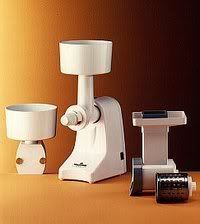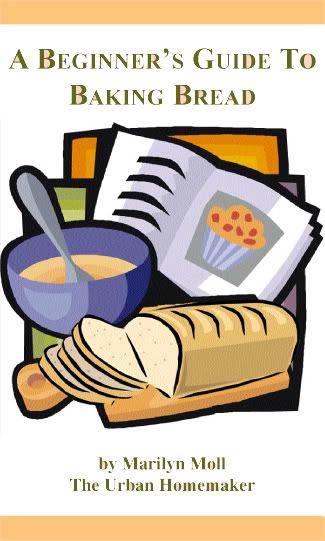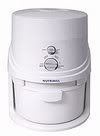Blustery, cold Fall weather has arrived in Colorado. For my family and I, there is nothing better than hot, nutty, fragrant whole grain bread fresh from the oven. After making most of our family’s bread for over 20 years, I never tire of the smell or the taste.
Although a grain mill is NOT a pre-requisite for mastering bread baking,, one of the questions I am most often asked is, “Which grain mill is the best mill?” With Christmas fast approaching, I know many of you are gathering comparative information to make the best grain mill choice for your family.
Grain Mill Comparisons:
Micronizing Grain Mills
Micronizing mills are exclusively powered by electricity and utilize technology that originally was developed for the pharmaceutical industry to derive fine, uniform powders. Modified for milling grains, micronizers are fast and capable of milling grains into very fine, powdery flour at low temperatures. My personal preference and baking experience has been exclusively with micronizing grain mills.
KITCHEN MILL Advantages – Large flour catch pan – holds 21-23 cups flour, strong reliability record, stores very compactly (if storage space is at a premium at your house you will appreciate this), produces high quality fine flour, mills all grains and dry beans, lifetime warranty on milling system/5 yr. warranty on the motor, mfg. in the USA. This grain mill was my first mill and my husband’s favorite.
Disadvantages: Smaller grain hopper, noisier than certain other mills.
NUTRIMILL– Advantages – Large flour canister – holds 21 cups of flour, life-time warranty, large grain hopper, slightly quieter than K-tec but has the same milling system, slide out drawer contains flour mills most grains and dry beans.
Disadvantages: higher price, takes a large amount of storage space, mfg. in Korea.
 Wondermill – Advantages – Formerly known as the Whisper Mill, slightly quieter than The Kitchen Mill, large hopper capacity, six year warranty, high quality flour, grain feeds well into milling mechanism, produces flour quickly. My personal favorite grain mill. New models have a larger, more reliable motor. This grain mill is my personal preference.
Wondermill – Advantages – Formerly known as the Whisper Mill, slightly quieter than The Kitchen Mill, large hopper capacity, six year warranty, high quality flour, grain feeds well into milling mechanism, produces flour quickly. My personal favorite grain mill. New models have a larger, more reliable motor. This grain mill is my personal preference.
Disadvantages – Smaller capacity flour canister (12 cup), does not crack grain, must turn on mill before adding grain so the mill will not jam.
Steel-Cone Burr Mill
This type of grain mill also can be operated by both hand or electric power and offers the ability to adjust the fineness of the flour from fine to cracked. Generally, the steel-cone burr will produce flour at a slower speed, but the electric version is also relatively quiet to run. Steel cone burr mills can make fine flours suitable for breads, muffins, pastries, etc, but the flour may not be as fine as stone or micronizing mills. These grain mills can also mill most whole grains and beans, but larger grains such as corn and beans will need to be cracked first, and then run through again on a fine setting if you want flour.
 FAMILY GRAIN MILL – Advantages – versatile; available with handbase and other food processing attachments, adjustable fine to course mechanism so mill will crack grain, can be used with Bosch Universal with an adaptor or with K-Tec Kitchenetics without an adaptor, German made, quietest mill we sell, takes minimal storage space, very economical.
FAMILY GRAIN MILL – Advantages – versatile; available with handbase and other food processing attachments, adjustable fine to course mechanism so mill will crack grain, can be used with Bosch Universal with an adaptor or with K-Tec Kitchenetics without an adaptor, German made, quietest mill we sell, takes minimal storage space, very economical.
Disadvantage – flour may not be quite as fine as Nutrimill, Wondermill or Kitchen Mill, slower production of flour than high speed mills.
The above information is excerpted from A Beginner’s Guide to Baking Bread by Marilyn Moll.
 Click Here to purchase this ebook for $9.95.
Click Here to purchase this ebook for $9.95.
This ebook Includes:
* How to Select Ingredients
* Selecting a Grain Mill
* Selecting A Mixer
* Step-by-Step Mixing Instructions
* How to Develop the Gluten
* Tips for the Best Bread
* Lots of Bread and Roll Recipes
* Troubleshooting Guide
* The Two-Stage Process
Item #6059 $9.95


Leave a Reply